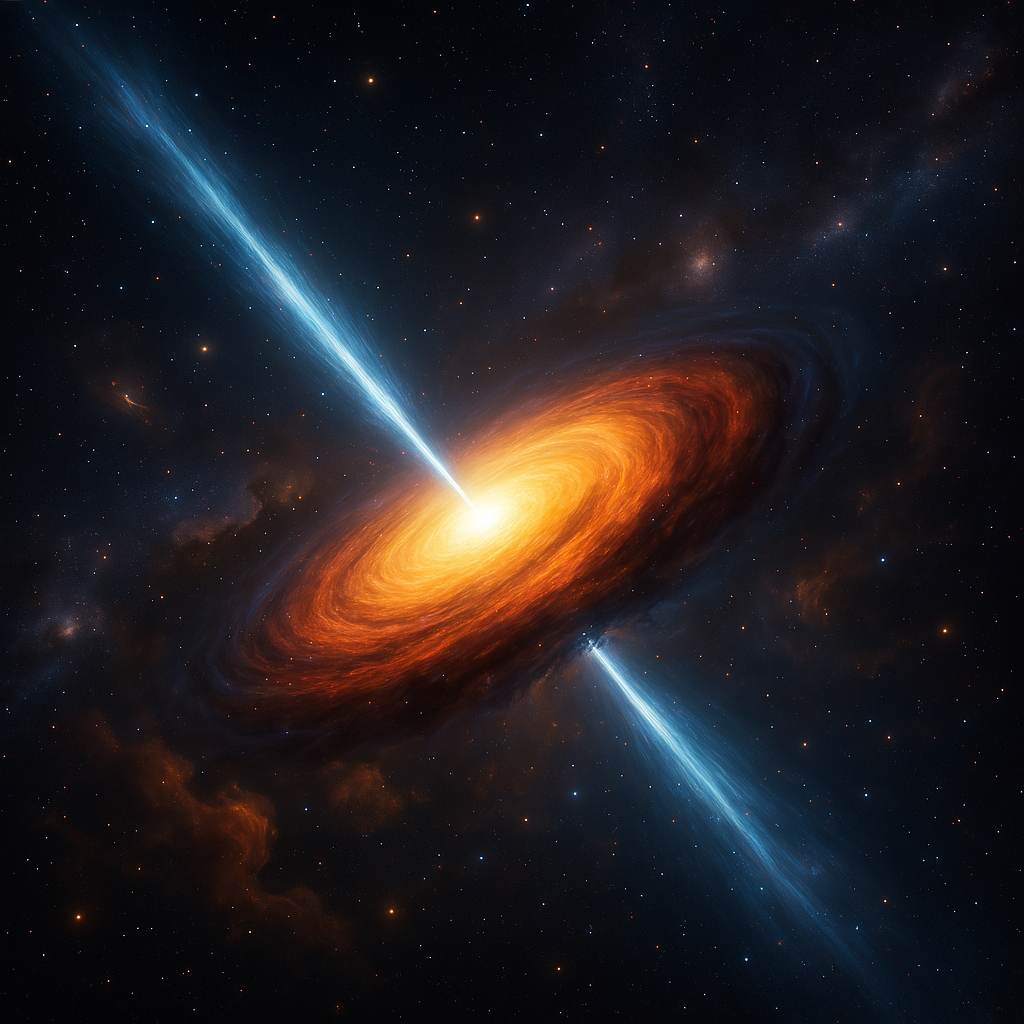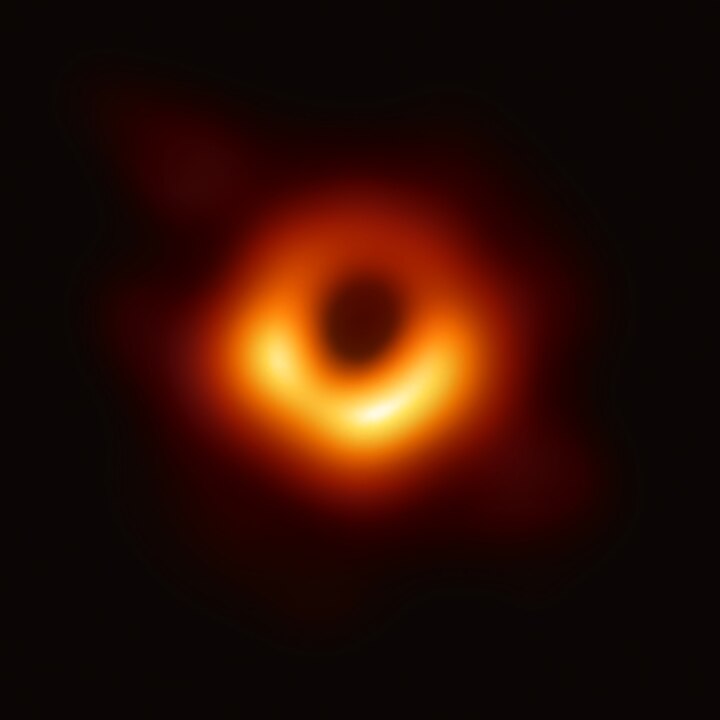Quasars are some of the most fascinating and powerful objects in the universe. They shine so brightly that they can outshine entire galaxies, yet they originate from the violent and chaotic hearts of galaxies. But what exactly are quasars, and how are they formed? Let’s dive into the cosmic mechanisms behind these celestial powerhouses and explore their incredible journey from formation to their role in shaping the universe.
What Exactly is a Quasar?
A quasar (short for “quasi-stellar radio source”) is an extremely luminous active galactic nucleus (AGN). At the center of every quasar sits a supermassive black hole, millions to billions of times the mass of our Sun. As material spirals toward the black hole, it forms an accretion disk—a swirling, glowing disk of gas and dust. The immense gravitational energy released in this process produces powerful radiation across the electromagnetic spectrum, making quasars some of the brightest objects in existence.
Fun Fact: If a quasar were located 33 light-years away from Earth (which is relatively close in cosmic terms), it would shine as brightly as the Sun in our sky!

Step-by-Step Formation of a Quasar
1. Galaxy Formation and Central Black Hole Growth
Quasars originate in galaxies that house supermassive black holes. The formation of a quasar begins when a galaxy undergoes a significant event, such as a galaxy merger or a burst of star formation. These events channel vast amounts of gas and dust toward the galaxy’s central black hole, triggering an intense feeding frenzy.
2. Accretion Disk Formation
As material falls toward the black hole, it doesn’t plunge directly into it. Instead, due to conservation of angular momentum, the material spirals inward, forming an accretion disk. This disk can reach temperatures of millions of degrees, emitting tremendous amounts of energy in the form of light, X-rays, and even radio waves.
Imagine water swirling around a bathtub drain. The closer the water gets to the drain, the faster it moves. The same principle applies to matter spiraling around a black hole in the accretion disk.
3. Energy Release and Radiation
The intense gravitational forces and friction within the accretion disk heat the gas to extreme temperatures. This process releases an enormous amount of radiation, which escapes in all directions. The energy output of a single quasar can be hundreds to thousands of times greater than the combined light of all the stars in the entire galaxy!
4. Formation of Quasar Jets
Some quasars also emit powerful jets of plasma that shoot out from their poles at nearly the speed of light. These jets, powered by the black hole’s magnetic fields, extend for thousands of light-years and can significantly impact their surrounding galaxies.

Why Are Quasars So Bright?
Quasars are luminous because of the enormous amounts of matter they consume. As material falls into the accretion disk, it releases energy in the form of electromagnetic radiation. This energy is emitted across the entire spectrum, from radio waves to visible light to X-rays, making quasars detectable from billions of light-years away.
Fun Fact: Some quasars are so bright that we can see them across vast cosmic distances, acting like “lighthouses” that help astronomers study the early universe.
The Role of Quasars in Galactic Evolution
Quasars aren’t just passive cosmic beacons; they play a crucial role in the evolution of galaxies. The powerful radiation and outflows from quasars can:
- Regulate Star Formation: The intense energy from a quasar can heat and blow away surrounding gas, preventing new stars from forming.
- Shape Galaxy Growth: The immense energy released by a quasar can reshape the structure of its host galaxy, influencing its future evolution.
- Spread Heavy Elements: Quasar-driven winds can distribute elements like carbon and oxygen throughout the galaxy, enriching future generations of stars and planets.

Are Quasars Still Active Today?
Most quasars existed in the early universe, around 10 billion years ago, when galaxies had plenty of gas to fuel them. Today, many supermassive black holes have “quieted down” as they’ve consumed most of the available material. However, some quasars still exist, and astronomers continue to discover them at great distances, providing insight into the universe’s history.
Think of quasars as cosmic bonfires. In the early universe, there was plenty of wood (gas and dust) to keep the fire roaring. As time passed, the fuel ran out, and the fires burned down, leaving behind quiet black holes.
Final Thoughts: Why Quasars Matter
Quasars are not just cosmic showpieces—they offer a window into the past, helping scientists understand how galaxies and black holes evolved over time. Their immense energy and far-reaching influence make them one of the most exciting topics in astronomy.
The next time you look up at the night sky, just imagine: somewhere out there, a quasar is burning brightly, illuminating the mysteries of the cosmos, one photon at a time.

Hi, I’m Debashis! I’m a space enthusiast and science writer with a passion for exploring the mysteries of the universe. From black holes to exoplanets and everything in between, I love diving deep into cosmic phenomena and sharing what I learn in an engaging, easy-to-understand way.
If you’d like to talk about space, share your thoughts, or collaborate on a project, feel free to put a comment on the post or drop me an email at debashis.mandal[at]gmail.com.


